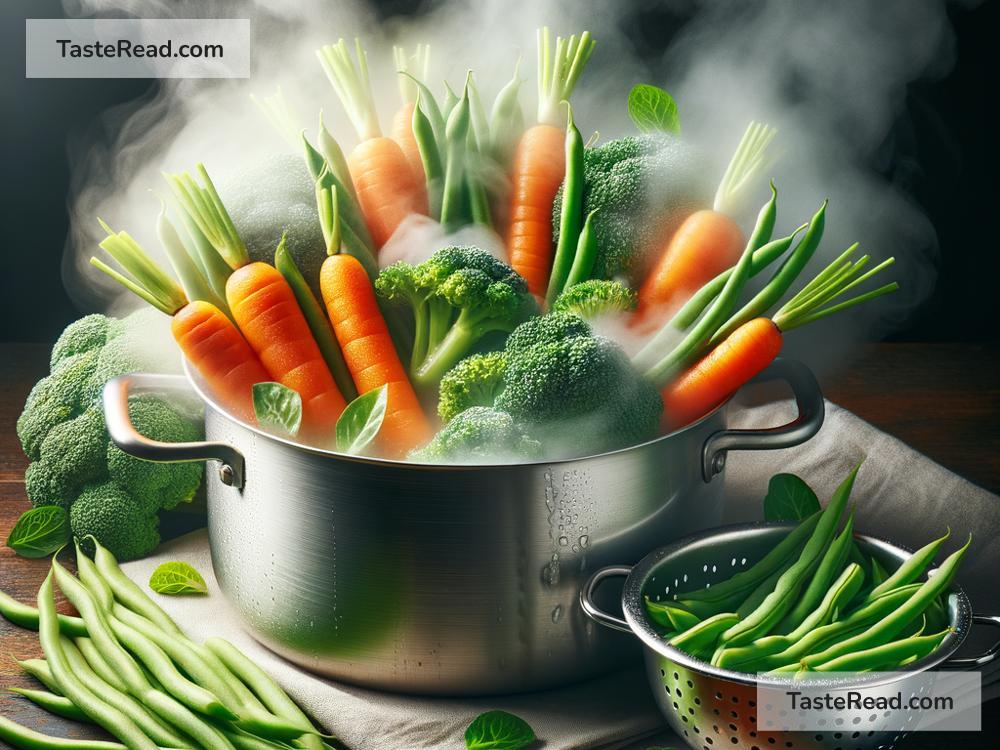Blanching: The Secret to Preserving the Natural Sweetness of Vegetables
Have you ever wondered why some frozen vegetables taste fresh and sweet, while others end up bland or lifeless? The answer often lies in a simple cooking technique called blanching. This easy step can make a big difference in maintaining the natural flavors of your veggies. In this blog post, we’ll explore how blanching works, why it’s important, and how it helps preserve the natural sweetness of vegetables.
What is Blanching?
Blanching is a brief cooking method that involves boiling vegetables in hot water (or steaming them) for a short time, followed by immediately cooling them down in ice water. It’s not a complicated process, and it’s commonly used to prepare vegetables for freezing, cooking, or even eating raw.
Here’s how it works:
- Boiling Stage: Vegetables are dipped into boiling water for a quick period—usually anywhere between 30 seconds to a few minutes, depending on the type of vegetable.
- Cooling Stage: After boiling, the vegetables are rapidly cooled in ice water. This stops the cooking process instantly.
That’s it! A small amount of effort that can lead to big rewards.
How Does Blanching Preserve Sweetness?
Veggies get their sweetness from natural sugars. When vegetables grow, they store these sugars in their cells, creating the delicious taste we love. However, if they’re exposed to air, heat, or enzymes for too long, these sugars can break down. This is why some vegetables lose their flavor and freshness over time or during improper cooking.
Blanching helps preserve the sweetness in several ways:
-
Stops Enzyme Activity: Vegetables contain enzymes that slowly break down their sugars over time. These enzymes are responsible for changes in texture, color, and flavor as vegetables age. When you blanch veggies, the brief exposure to boiling water “turns off” these enzymes, halting the natural decay process. This keeps the sweetness intact!
-
Locks in Fresh Flavor: Blanching also helps prevent oxidation, which can cause vegetables to lose their bright color and fresh taste. By quickly cooling the vegetables after boiling, you protect their natural sugars from breaking down further.
-
Prepares Vegetables for Freezing: Freezing vegetables without blanching can lead to a loss of flavor and texture over time. Blanching ensures that the natural sweetness stays locked in, even during months of freezing.
Which Vegetables Benefit Most from Blanching?
While not all vegetables require blanching, there are several varieties that benefit immensely from this technique. Here are a few examples:
-
Carrots: Carrots are known for their natural sweetness, which comes from their sugar content. Blanching ensures that this sweetness doesn’t fade, even when frozen or cooked later.
-
Sweet Corn: Sweet corn can easily lose its sugary flavor if not preserved properly. Blanching “captures” its sweetness before it’s stored.
-
Peas: Peas are delicate and prone to losing their vibrant flavor. A quick blanch keeps them sweet and bright green.
-
Broccoli and Cauliflower: These vegetables often taste sweet when fresh. Blanching helps maintain their flavor while stopping bitterness from developing.
-
Green Beans: Green beans lose their crunch and sweetness quickly without blanching. The technique helps to keep them crisp and flavorful.
Simple Steps to Blanch Vegetables at Home
Blanching isn’t hard, and you don’t need fancy equipment to do it. Here’s a step-by-step guide to blanching vegetables at home:
-
Boil Water: Fill a large pot with water and bring it to a rolling boil. Add a pinch of salt if you like—it can enhance flavor during blanching.
-
Prepare Ice Water: While the water is heating, fill a large bowl with ice water to use later.
-
Blanch the Vegetables: Add your vegetables to the boiling water. Depending on the type of vegetable, blanching can take anywhere from 30 seconds to a few minutes. Tender vegetables (like peas) need less time, while firmer ones (like carrots) may need a bit longer.
-
Cool Them Quickly: Once the vegetables have blanched, scoop them out using a slotted spoon and transfer them straight into the ice water. This cooling process stops the cooking quickly.
-
Dry and Store: After the vegetables cool, drain them thoroughly and pat them dry. You can now eat them, freeze them, or use them in other recipes!
Why Should You Blanch Your Vegetables?
Blanching might seem like an extra step when you’re cooking or prepping vegetables, but it’s worth the effort. Here’s why:
- Preserves Flavor: Blanching helps keep vegetables as sweet and fresh as possible.
- Keeps Colors Vibrant: Bright, colorful vegetables look and taste better on your plate.
- Extends Shelf Life: When preparing vegetables for freezing, blanching helps them stay good for months.
- Improves Texture: Vegetables stay crisp and tender, without becoming mushy or bland.
Conclusion
Whether you’re freezing vegetables or preparing them for a meal, blanching is an easy and effective way to preserve the natural sweetness and freshness of your favorite veggies. From carrots to sweet corn, broccoli to peas, this process ensures that all the goodness of your vegetables stays intact. Next time you want to enjoy the full flavor of nature’s bounty, give blanching a try—it’s one small step for you but one giant leap for vegetable flavor!


